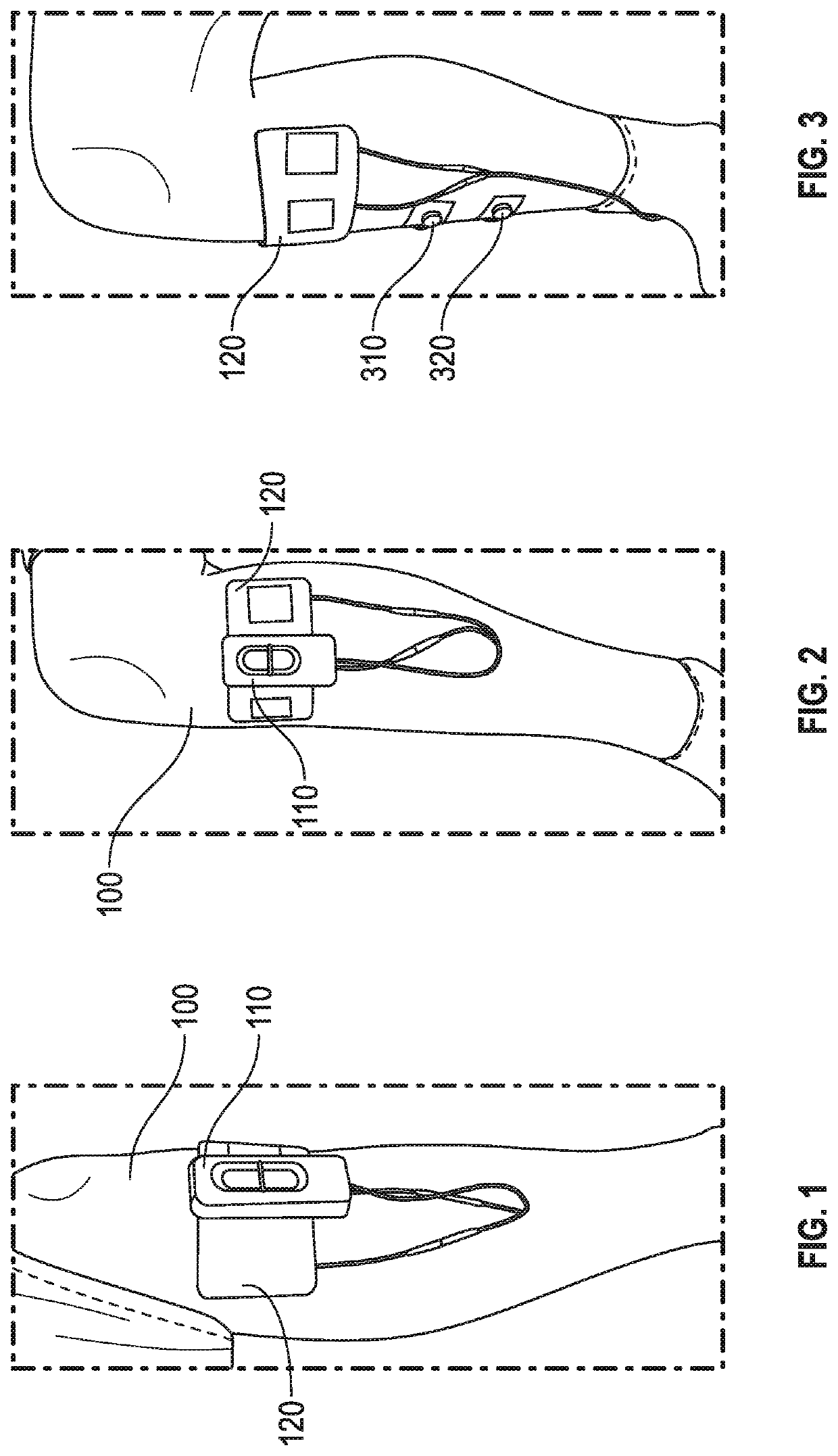Peripheral nerve stimulation for restless legs syndrome
a restless leg syndrome and peripheral nerve technology, applied in the field of neurostimulation, can solve the problems of affecting the patient's ability to fall asleep, affecting the patient's sleep quality, and establishing safe and reliable nerve recruitment, so as to reduce individual or global treatment costs, improve individual patient outcomes, and personalize the effect of electrostimulation therapy
- Summary
- Abstract
- Description
- Claims
- Application Information
AI Technical Summary
Benefits of technology
Problems solved by technology
Method used
Image
Examples
example 1
Voluntary Phasic Flexion
[0142]In this approach, the patient or subject can be instructed to repeatedly perform a controlled movement. For example, the subject can be instructed to perform this specified movement multiple times at baseline (without delivering NPNS) and during evaluation of each parameter setting of the NPNS being tested to reduce variability. The sEMG response can be measured on a muscle associated with the specified movement (or an antagonistic muscle thereto). Parameters of the specified movement, including effort and time interval between each movement instance, can be selected such that fatigue is minimal, such that movement-evoked sEMG activity stays relatively constant over time in the absence of delivery of NPNS. NPNS can be applied in a blocked experimental design and the sEMG activity during NPNS-ON blocks can be compared to sEMG activity during NPNS-OFF blocks.
[0143]More particularly, the subject can be instructed to dorsiflex the subject's foot towards the...
example 2
Involuntary Phasic Reflex
[0148]In this approach, the patient or subject can be instructed to relax their muscles. A muscular reflex can be repeatedly induced by applying phasic electrical stimulation to sensory fibers associated with a muscle spindle (e.g., Hoffman's reflex) or by applying phasic force to a muscle spindle such as to induce a stretch reflex (e.g., patellar reflex). The surface EMG (sEMG) signal can be measured on a muscle associated with the reflex (or an antagonistic muscle thereto). The parameters of reflex induction, including amplitude and time interval between each reflex instance, can be selected such that fatigue is minimal, and thus reflex-evoked sEMG activity stays relatively constant over time in the absence of NPNS. NPNS can be applied, such as in a blocked experimental design, and the sEMG activity during NPNS-ON blocks can be compared to sEMG activity during NPNS-OFF blocks.
example 3
Voluntary Isometric Flexion
[0149]In this approach, the patient or subject can be instructed to tonically activate muscle via isometric flexion. For example, this can include tonically activating muscle by pushing against a fixed object or pulling a rope attached to a fixed object. Surface EMG (sEMG) can be measured on a muscle associated with the isometric flexion (or an antagonistic muscle thereto). Effort and duration of protocol can be selected such that fatigue is minimal, and thus sEMG activity stays relatively constant over time in the absence of NPNS. NPNS can be applied in a blocked experimental design and the sEMG activity during NPNS-ON blocks can be compared to sEMG activity during NPNS-OFF blocks.
[0150]In the various Examples 1-3, the system can include an electrostimulation unit with a response signal measurement unit and controller circuitry to measure a signal that is related to muscle activation, such as one or more of the following physiological signals:
[0151]a. EMG...
PUM
 Login to View More
Login to View More Abstract
Description
Claims
Application Information
 Login to View More
Login to View More - R&D
- Intellectual Property
- Life Sciences
- Materials
- Tech Scout
- Unparalleled Data Quality
- Higher Quality Content
- 60% Fewer Hallucinations
Browse by: Latest US Patents, China's latest patents, Technical Efficacy Thesaurus, Application Domain, Technology Topic, Popular Technical Reports.
© 2025 PatSnap. All rights reserved.Legal|Privacy policy|Modern Slavery Act Transparency Statement|Sitemap|About US| Contact US: help@patsnap.com



